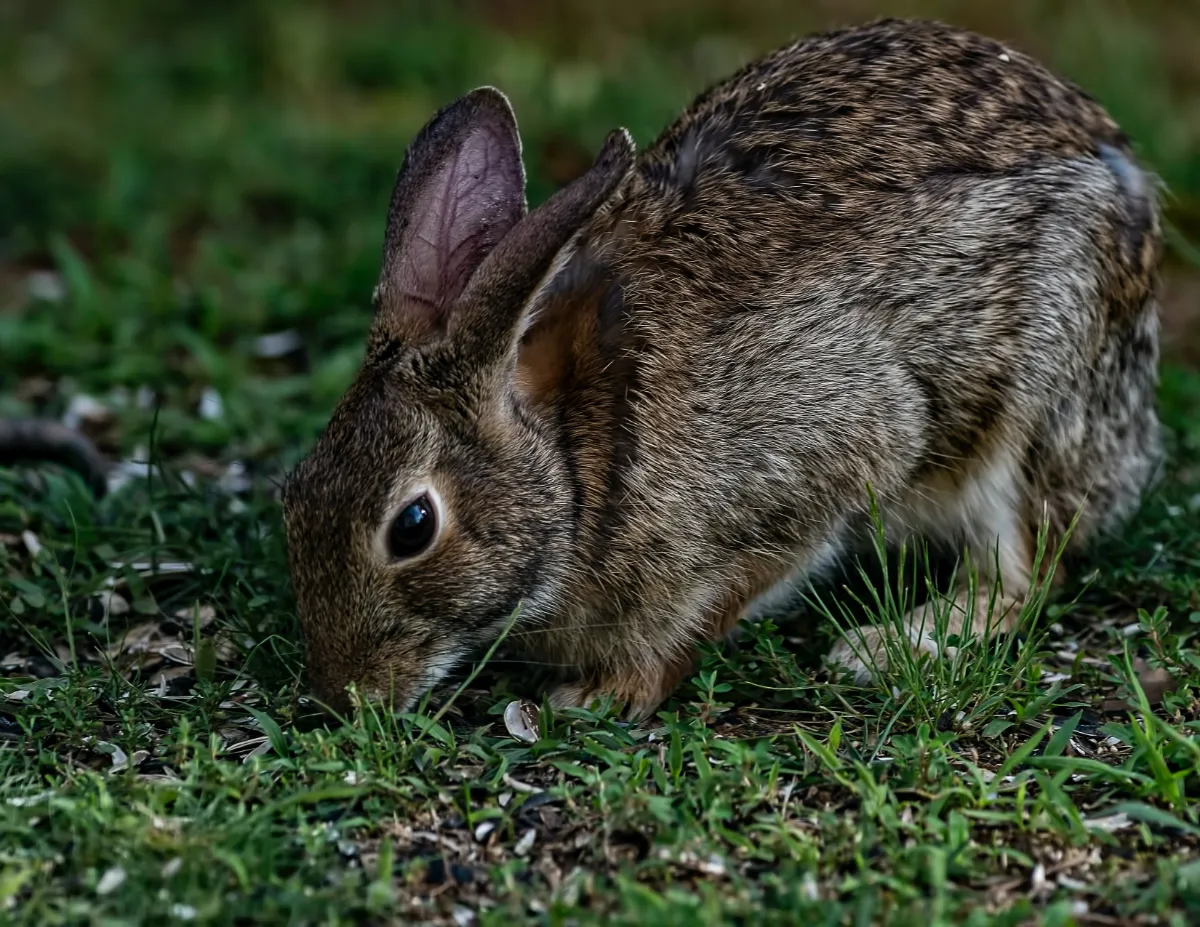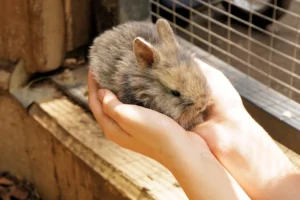Do you ever wonder what makes rabbits flock to certain areas?
Discover the secrets behind what attracts these furry creatures in our article, ‘What Attracts Rabbits.’
From the role of food sources to creating a welcoming habitat, we’ll explore the factors that influence rabbit activity.
By identifying potential dangers and encouraging rabbit-friendly practices, you can enhance your understanding of these adorable creatures and provide them with the environment they desire.
Get ready to uncover the allure of rabbits and serve them better.
In This Article
Key Takeaways
- Rabbits are attracted to a diet rich in fresh vegetables, greens, grass, and hay.
- They are attracted to a calm and peaceful environment, and can be startled by loud noises and sudden movements.
- Providing hiding spots, tunnels, and chew toys can attract rabbits and make them feel safe and mentally stimulated.
- Rabbits are most active during dawn and dusk, and providing hiding places and companionship can encourage their activity levels.
The Role of Food Sources
If you want to attract rabbits to your garden, you should consider the role of food sources. Understanding rabbit diets is crucial in creating a welcoming environment for these furry creatures.
Vegetation plays a significant role in their diet, so it’s essential to provide an abundance of it. Rabbits are herbivores, which means they primarily eat plants. They enjoy a variety of greens, such as lettuce, kale, and spinach. Leafy vegetables like clover and dandelion are also favorites. Additionally, grass and hay are essential parts of their diet.
Understanding Rabbit Preferences
You should observe your rabbit closely to understand its preferences and create a suitable environment for it. Rabbit behavior can vary greatly from one individual to another, so it’s important to pay attention to their likes and dislikes.
Rabbits are social animals and enjoy the company of their human caregivers. They also appreciate a calm and peaceful environment, as loud noises and sudden movements can startle them. Providing hiding spots and tunnels in their living area can help them feel safe and secure.
Rabbits have a natural instinct to chew, so offering appropriate chew toys and hay can keep them mentally stimulated and prevent dental problems. Additionally, rabbits prefer a diet rich in fresh vegetables and hay, with limited access to fruits and commercial rabbit pellets.
Creating a Welcoming Habitat
To create a welcoming habitat, provide multiple hiding spots and tunnels for your rabbit to explore and feel secure. Rabbits are naturally prey animals, so they feel safer when they’ve places to hide. Consider placing cardboard boxes, tunnels, or even fabric tents in your rabbit’s living area. These hiding spots will provide a sense of security and comfort for your furry friend.
In addition to shelter options, it’s important to ensure that your rabbit has access to clean and fresh water sources. Rabbits need a constant supply of water to stay hydrated and healthy. You can provide water through a water bottle or a shallow bowl. Make sure to change the water regularly to prevent any bacterial growth.
Creating a welcoming habitat for your rabbit involves providing hiding spots and tunnels for them to explore and feel secure. Additionally, ensuring they’ve access to clean and fresh water sources is crucial for their well-being.
Factors That Influence Rabbit Activity
When providing a welcoming habitat for your rabbit, it’s important to consider the factors that influence their activity levels throughout the day.
Rabbit behavior is greatly influenced by environmental factors, such as temperature, light, and noise. Rabbits are crepuscular animals, meaning they’re most active during dawn and dusk.
They have a natural instinct to burrow and explore their surroundings, so providing them with plenty of hiding places and tunnels can encourage their activity.
Additionally, rabbits are social animals and thrive on companionship. Having a bonded partner or spending quality time with them can positively impact their activity levels.
It’s also important to note that rabbits are sensitive to their surroundings, so providing a calm and quiet environment will help them feel safe and secure, further enhancing their activity levels.
Identifying Potential Dangers
Be aware of the potential dangers that can threaten your rabbit’s safety, such as predators or toxic plants. Keeping your furry friend safe is of utmost importance.
Here are a few things to consider when identifying predators and assessing environmental hazards:
- Predators: It’s crucial to be able to recognize potential threats to your rabbit. Look out for animals such as foxes, raccoons, and birds of prey, which can pose a danger to your pet.
- Toxic Plants: Some plants can be harmful or even fatal if ingested by your rabbit. Research and identify plants that are toxic to rabbits, such as lilies, azaleas, and tulips, to ensure they’re kept out of reach.
- Fencing: Install a secure fence around your rabbit’s habitat to prevent entry by predators or other animals that may cause harm.
- Secure Shelter: Provide a safe and secure shelter for your rabbit, such as a sturdy hutch or enclosure, to protect them from both predators and environmental hazards.
Taking these precautions will help create a safe environment for your rabbit, ensuring their well-being and happiness.
Encouraging Rabbit-Friendly Practices
You can encourage rabbit-friendly practices by providing plenty of fresh vegetables and hay for your furry friend to enjoy. Rabbits are herbivores, so a diet rich in fresh vegetables is essential for their health and well-being. Hay should also be available at all times to aid in digestion and provide mental stimulation.
Promoting rabbit conservation involves creating a safe and stimulating environment for your pet while also encouraging responsible pet ownership. Additionally, it’s important to ensure that your rabbit has plenty of exercise and social interaction. Providing a spacious and secure enclosure, as well as supervised playtime outside, can help prevent boredom and promote a healthy lifestyle.
Frequently Asked Questions
How Can I Train My Rabbit to Come When Called?
To train your rabbit to come when called, use effective recall commands and rabbit training techniques. Consistency and positive reinforcement are key. Start in a quiet area, say their name and command, then reward them with a treat or praise.
What Are the Common Signs of Stress in Rabbits?
Common stress signs in rabbits include hiding, excessive grooming, aggression, and loss of appetite. To help them relax, create a calm environment, provide plenty of hiding spaces, and offer toys and treats for mental stimulation.
Can Rabbits Be Kept Indoors as Pets?
Keeping rabbits indoors as pets has both pros and cons. On the positive side, rabbits can be litter trained and are less exposed to predators. However, they need plenty of space and mental stimulation.
What Are Some Natural Predators of Rabbits?
Natural predators of rabbits include foxes, coyotes, birds of prey, and snakes. These animals hunt rabbits in their natural habitats using their hunting behaviors and instincts. It’s important for rabbits to be aware of these predators for their safety.
Is It Safe to Introduce a New Rabbit to an Existing Rabbit?
Introducing a new rabbit to an existing one can be risky. The bonding process requires patience and careful observation. To increase your chances of success, gradually introduce them and provide separate spaces initially.
Conclusion
So, now you know what attracts those fluffy little creatures called rabbits. It turns out, they’re just like us humans – they’re all about the food! But it’s not just any food that lures them in, oh no. These picky eaters have their preferences.
And if you want to keep them coming back for more, you better create a habitat that’s as welcoming as a luxury resort. Just be careful though, because there are potential dangers lurking around every corner.
So, let’s all embrace rabbit-friendly practices and make our furry friends feel right at home.





